
In today’s world, protecting our eyes is more crucial than ever. From everyday activities to high-risk jobs, the need for effective eye protection has become a top priority. Blinking alone isn’t enough to shield our eyes from potential hazards, making it essential to explore various options that can safeguard our vision in different situations.
This article delves into the top five eye protection choices you should know about. We’ll explore safety goggles, prescription safety glasses, face shields, welding helmets, and safety sunglasses. Each option offers unique features and benefits, helping you make informed decisions about the best eye protection for your specific needs. Whether you’re working in a lab, on a construction site, or simply enjoying outdoor activities, understanding these options will help you keep your eyes safe and healthy.
Table of Contents
Safety Goggles
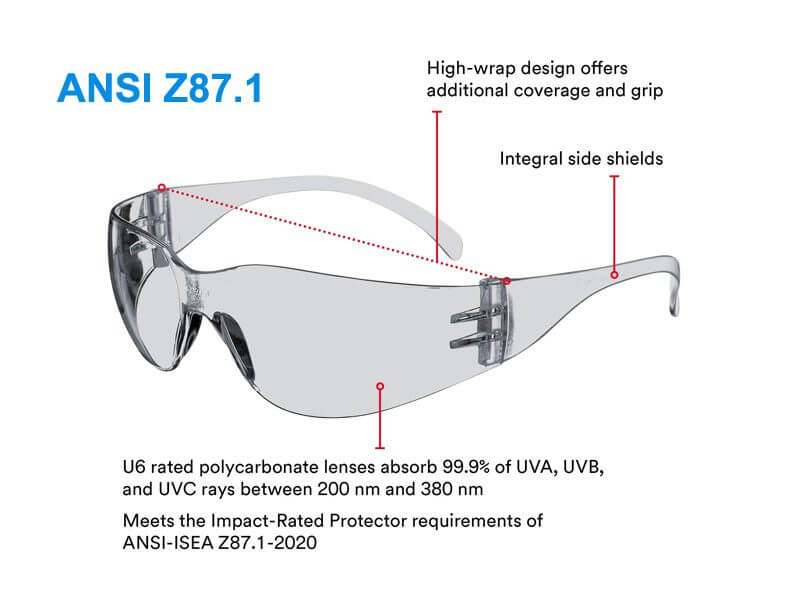
Safety goggles are essential for eye protection in various environments. They form a protective seal around the eyes, shielding against liquid splashes, chemical hazards, and flying debris. These goggles are designed to fit comfortably over prescription lenses and come in different styles, including perforated, port-vented, or non-vented frames. They’re particularly crucial in workplaces where there’s a risk of eye injury from hazardous materials or impact. Safety goggles meet specific industry standards, such as ANSI Z87.1, ensuring they provide adequate protection. While they offer superior protection compared to safety glasses, goggles may fog up during use. Regular maintenance and proper fit are essential for optimal performance and comfort.
Prescription Safety Glasses
Prescription safety glasses offer a practical solution for those who require vision correction while working in hazardous environments. These glasses combine the benefits of regular prescription lenses with the protection of safety eyewear. They meet ANSI Z87.1 standards, ensuring high impact resistance and optical clarity. Made from materials like polycarbonate or Trivex, these glasses provide 100% UV protection. They can be customized with various coatings, including anti-scratch and anti-fog, to enhance durability and performance. Prescription safety glasses contribute to increased productivity by allowing workers to focus on their tasks without compromising eye safety.
Face Shields
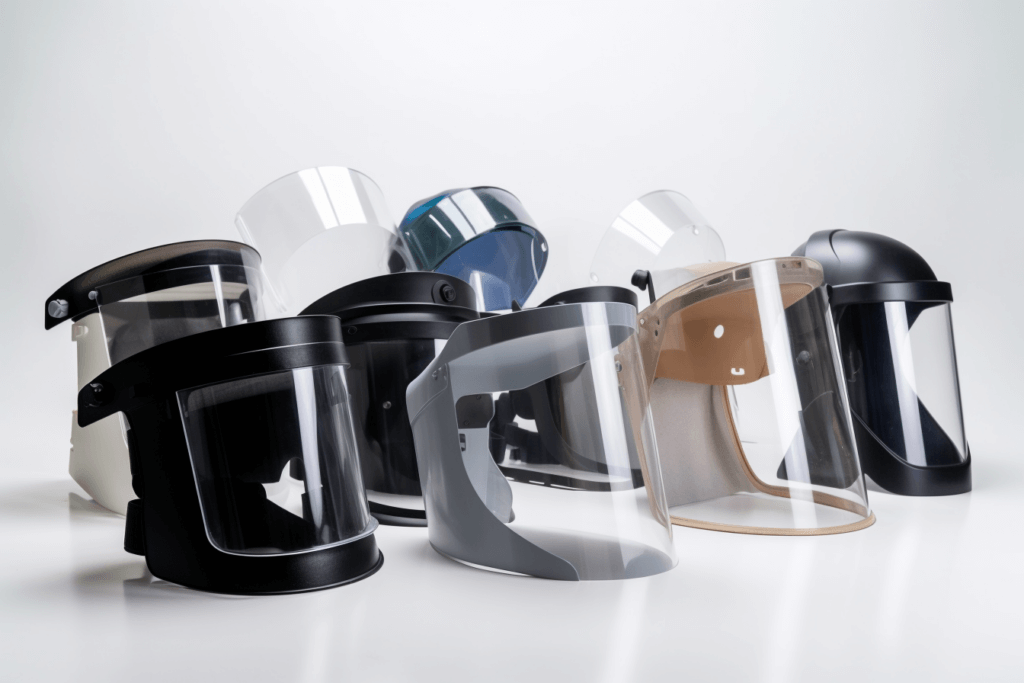
Face shields provide comprehensive protection for the entire facial area, including eyes, nose, and mouth. These transparent devices consist of a curved screen and adjustable head strap, extending below the chin. They offer unique features such as anti-fog, anti-splash, and anti-static treatments, making them lightweight and optically clear. Face shields are particularly effective in blocking splashes and sprays, reducing exposure to infectious droplets by 96% immediately after a cough. While they can be worn alone or with face masks, the CDC recommends using them in conjunction with masks for optimal protection. Face shields are durable, easy to clean, and prevent wearers from touching their faces, making them a valuable addition to personal protective equipment.
Welding Helmets
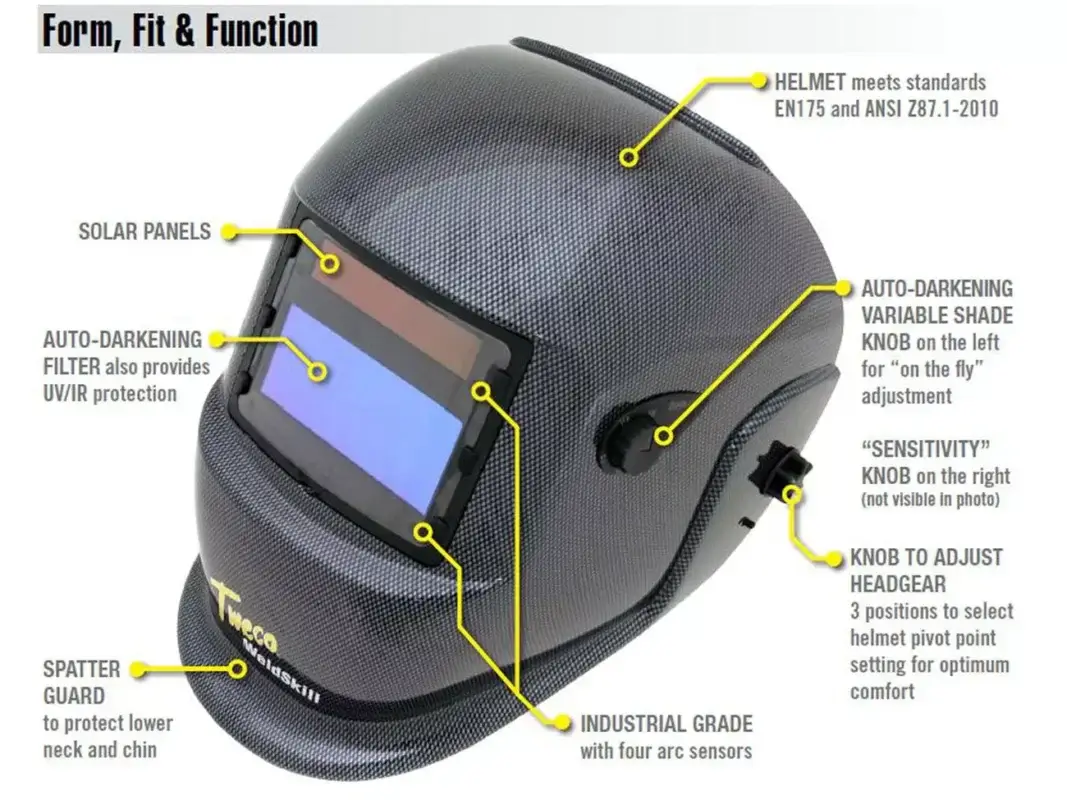
Welding helmets are essential for eye protection during welding operations. They shield welders from harmful UV and IR rays, preventing conditions like photokeratitis and cataracts. Modern auto-darkening helmets adjust lens tint automatically, enhancing safety and precision. These helmets also protect against hot metal sparks and spatter, reducing burn risks. Advanced models feature air filtration systems, addressing respiratory health concerns in poorly ventilated areas. The clarity of vision provided by auto-darkening lenses allows for more accurate welds, while ergonomic designs ensure comfort during long work hours.
Safety Sunglasses
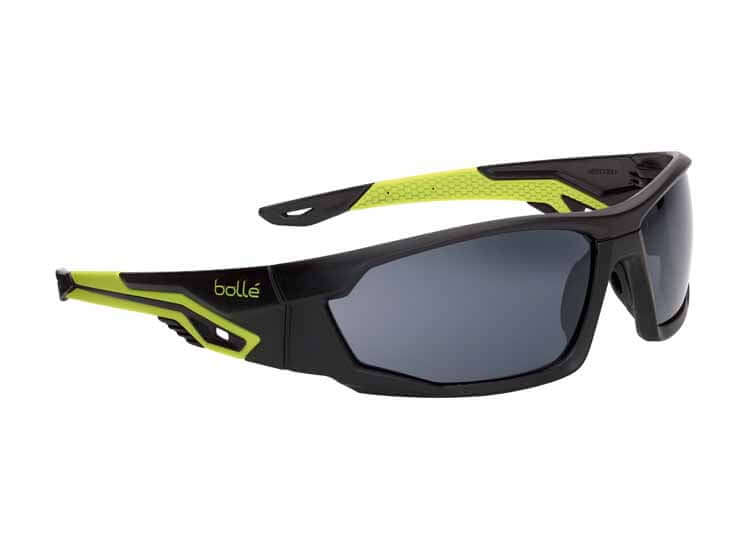
Safety sunglasses offer essential protection for outdoor activities and high-risk environments. These specialized eyewear options combine UV protection with impact resistance, shielding eyes from harmful rays and potential hazards. They come in various styles, including polarized lenses that reduce glare and enhance visual clarity. Safety sunglasses are crucial for industries like construction and manufacturing, as well as outdoor sports and recreation. They minimize both short-term and long-term UV health risks, such as headaches and cataracts. For optimal protection, look for safety sunglasses that meet ANSI Z87 standards and block 99-100% of UV rays.
Conclusion
The world of eye protection offers a range of options to suit various needs and environments. From safety goggles that shield against chemical splashes to prescription safety glasses that combine vision correction with protection, these tools play a crucial role in safeguarding our eyes. Face shields, welding helmets, and safety sunglasses round out the list, each providing unique benefits for specific situations.
Choosing the right eye protection has a significant impact on both safety and comfort in various settings. Whether you’re working in a lab, on a construction site, or enjoying outdoor activities, understanding these options helps to make informed decisions about eye safety. By prioritizing proper eye protection, we can prevent potential injuries and maintain healthy vision for years to come.
FAQs
What are the most effective ways to protect your eyes on a daily basis?
To safeguard your eyes daily, maintain a safe distance from screens, rest your eyes regularly and blink often, wear sunglasses consistently, incorporate omega-3 fatty acids into your diet, eat more green vegetables, manage your blood sugar levels, follow a proper contact lens routine, and regularly discard old eye makeup.
What is the most effective type of eye protection?
Goggles are considered the best type of eye protection for environments where there are risks of splashes, airborne dust, or flying debris, such as during metal grinding. Safety goggles provide a secure, form-fitting seal around the face, protecting the eyes from side-entry of foreign objects.
What type of eye protection is necessary for various workplace hazards?
The necessary eye protection depends on the specific hazards present in the workplace. Safety glasses with side shields are required in environments with particles, flying objects, or dust. For chemical exposure, goggles are essential to provide adequate protection.
What are the safety standards for eye protection?
Eye and face protection must comply with the ANSI Z87.1 standard, which is the American National Standard Practice for Occupational and Educational Eye and Face Protection. This standard ensures that safety eyewear can be used over prescription lenses without affecting the fit of other safety gear.
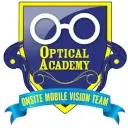

Worksite
All Employees Served With Direct Vision Care All In One Day At Their Worksite!.
Glasses2Classes
Vision screenings, eye exams, and eyewear for all students at their schools!
Community Events
Provide Easy Access To Eye Care & Eyewear for Your Entire Community!
At Home
Skip the trip! We travel directly to all fragile homebound patients!